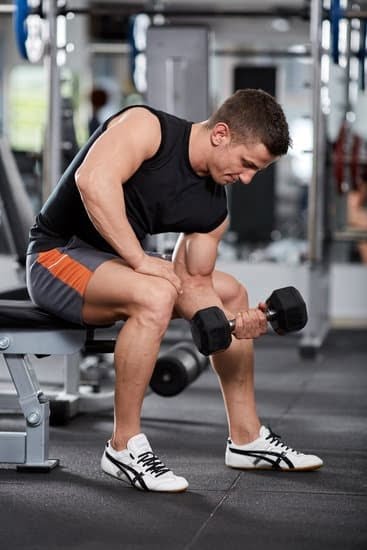Do all exercise balls fit all bases? When it comes to choosing the right exercise ball and base combination, it’s important to understand the purpose of these fitness tools and their compatibility. Exercise balls, also known as stability balls or Swiss balls, are versatile workout accessories that can be used for a variety of exercises to improve balance, strength, and flexibility.
These balls come in different sizes and materials, offering users options to suit their individual needs. The bases for these exercise balls also vary, from simple rings to sturdy stands, each designed to provide stability during workouts.
When it comes to exercise balls, there are different types available on the market. From traditional PVC gym balls to anti-burst and non-slip options, the choices can seem overwhelming. Each type of ball has its own unique features and benefits. Additionally, there are various bases that can be used with exercise balls such as metal stands or plastic rings. The key question remains: do all exercise balls fit all bases?
It’s essential to consider factors such as size and material when determining compatibility between exercise balls and bases. The size of the exercise ball plays a crucial role in how well it fits on different bases. Moreover, the material of both the ball and the base can impact how securely they fit together. In this article, we will explore the different types of exercise balls and bases available in the market along with factors that determine their compatibility.
Types of Exercise Balls
When it comes to exercise balls, commonly known as stability balls or Swiss balls, there are several types available in the market. Each type is designed to cater to different needs and preferences, offering unique features and benefits for users. Here are some of the most common types of exercise balls:
- Standard PVC Exercise Balls: These are the traditional exercise balls made of PVC material. They are lightweight, durable, and affordable, making them a popular choice for general fitness and rehabilitation exercises.
- Anti-Burst Exercise Balls: These exercise balls are constructed with a thicker PVC material to prevent bursting or deflating if punctured. They provide an extra layer of safety during workouts and are suitable for intense exercises and heavy users.
- Peanut-Shaped Exercise Balls: Also known as peanut balls or double-bump balls, these exercise balls have an elongated shape with two connected round ends. They are designed to provide more stability and control during exercises, making them ideal for physical therapy and balance training.
- Textured Exercise Balls: These exercise balls feature a textured surface for better grip and traction. The added texture provides sensory feedback and can be beneficial for users who prefer a non-slip surface during their workouts.
With such a variety of exercise ball options available, individuals can choose the type that best suits their specific fitness goals, comfort level, and intended use.
Factors to Consider When Choosing an Exercise Ball
When selecting an exercise ball, it’s essential to consider factors such as size, weight capacity, material quality, and intended use. Different types of exercise balls may offer varying levels of firmness, support, and durability based on these factors. Additionally, individual preferences such as color options may also play a role in the decision-making process.
Overall, understanding the characteristics of each type of exercise ball can help users make an informed choice that aligns with their unique fitness needs and expectations.
Types of Bases
Traditional Stands
Traditional stands are often made of sturdy plastic, metal, or wood and are designed to hold exercise balls in place during workouts. These bases typically have a circular or oval shape and may feature additional stability mechanisms such as rubberized feet or non-slip pads. Traditional stands are suitable for use on flat, even surfaces and provide a stable foundation for various exercises such as core strengthening, balance training, and stretching.
Stackable Rings
Stackable rings are a popular type of base for exercise balls as they offer versatility and adjustable height options. These bases consist of interlocking rings that can be stacked to increase the height of the exercise ball, allowing users to customize their workout setup according to their specific needs. Stackable rings are often used in fitness studios, rehabilitation centers, and home gyms for exercises that require varying degrees of stability and support.
Adjustable Bases
Some exercise ball bases come with adjustable features that allow users to change the angle or incline of the ball to create different levels of challenge during workouts. These adjustable bases may include built-in legs or frames with adjustable settings for increased instability, which can help improve balance, core strength, and overall coordination.
Additionally, some models may offer the option to securely attach resistance bands or other fitness accessories to enhance the variety of exercises that can be performed with an exercise ball.
In summary, there are various types of bases available for use with exercise balls, each offering unique features and benefits. When choosing a base for an exercise ball, it is essential to consider factors such as stability, adjustability, and intended use in order to select the most suitable option for individual fitness goals and preferences.
Compatibility
When it comes to exercise balls and bases, compatibility is essential for a safe and effective workout. Not all exercise balls can fit all bases, and several factors determine their compatibility. Understanding these factors can help individuals choose the right combination for their specific needs.
Factors that determine compatibility:
- Size of the exercise ball: The size of the exercise ball plays a crucial role in its compatibility with different bases. Larger exercise balls may not fit on smaller bases, while smaller balls may not provide enough stability on larger bases.
- Type of base: Different types of bases, such as stationary bases, rolling bases, or chair bases, may require specific types of exercise balls for proper fit and function.
- Weight capacity: Exercise balls and bases are designed to support certain weight capacities. It is important to match the weight capacity of the exercise ball with that of the base to ensure safety during use.
It is important to consider these factors when choosing an exercise ball and base combination for home or gym use. Using an incompatible combination can lead to instability, discomfort, or even accidents during workouts. Therefore, individuals should carefully assess these factors before making a purchase.
Size Matters
When it comes to exercise balls and their compatibility with different bases, size plays a crucial role. The size of the exercise ball can significantly impact its compatibility with various bases, influencing stability, safety, and overall effectiveness during workouts.
Impact on Stability and Balance
The size of the exercise ball directly affects its stability and balance when used with different bases. A larger exercise ball provides a broader base of support, which can enhance stability during exercises such as planks, push-ups, or squats. On the other hand, a smaller exercise ball may offer less stability but can be beneficial for targeting specific muscle groups or for advanced balance training.
Compatibility With Base Size
It is essential to consider the size of the base when choosing an exercise ball. Some bases are designed to accommodate specific sizes of exercise balls for optimal performance. A larger base may be necessary for supporting a larger exercise ball to ensure stability and prevent tipping over during intense workouts. Conversely, a smaller base may be suitable for smaller exercise balls used for targeted exercises or rehabilitation purposes.
Choosing the Right Combination
When selecting an exercise ball and base combination, it is vital to consider the intended use and individual preferences. For general fitness activities and core strengthening exercises, a medium-sized exercise ball with a stable base is often recommended. However, for specific rehabilitation purposes or advanced balance training, individuals may opt for a smaller exercise ball with a compatible base that allows for greater freedom of movement while maintaining safety and stability.
Stability and Safety
When it comes to using exercise balls, stability and safety are crucial factors to consider. Using the right exercise ball with the appropriate base is essential for ensuring a safe and effective workout. The size of the exercise ball can significantly impact its stability when used with different bases. It is important to choose a ball and base combination that provides adequate support and prevents any risk of injury during exercises.
The compatibility between an exercise ball and its base directly affects its stability. Not all exercise balls fit all bases, so it’s important to consider this factor when selecting equipment for your fitness routine.
Factors such as material, size, and weight capacity should be taken into account to ensure that the exercise ball fits securely on its base. Additionally, considering the type of exercises that will be performed on the ball can also help determine the most suitable combination of ball and base for optimal stability and safety.
To ensure stability and safety during workouts, it is recommended to use an anti-burst exercise ball made from high-quality material that can withstand heavy loads. It should be paired with a compatible base that offers firm support and prevents slipping or wobbling during use. By prioritizing stability and safety when choosing an exercise ball and base combination, individuals can reduce the risk of accidents or injuries while exercising.
| Exercise Ball Size | Base Type |
|---|---|
| 55cm | Stability Ring Base |
| 65cm | Solid Plastic Base |
| 75cm |
Tips for Choosing the Right Combination
Exercise balls are a versatile fitness tool that can be used for various workouts, including core strengthening, stability training, and even as an alternative to desk chairs for improved posture. When it comes to choosing the right exercise ball and base combination, there are several factors to consider in order to ensure compatibility and safety during use.
One of the most important considerations when choosing an exercise ball and base combination is the size of the ball. Exercise balls come in various sizes, typically ranging from 45cm to 85cm in diameter. It’s essential to select the appropriate size based on your height and the intended use of the ball.
A larger exercise ball provides more stability, while a smaller one offers greater range of motion for exercises. Additionally, different bases are designed to accommodate specific sizes of exercise balls, so ensuring a proper match between the two is crucial for safety and effectiveness.
Another factor to keep in mind when selecting an exercise ball and base combination is the material and construction of both the ball and the base. High-quality anti-burst exercise balls made from durable PVC material are generally recommended for safety and longevity. As for bases, consider whether you need a stationary base or a rolling base depending on your workout routine and space availability.
Lastly, it’s important to consider your individual needs and preferences when choosing an exercise ball and base combination. If you have specific fitness goals or limitations, such as back issues or pregnancy, consulting with a fitness professional or physical therapist can provide valuable guidance in selecting the right combination for your needs.
| Considerations | Tips |
|---|---|
| Size | Choose an appropriate size based on height and intended use |
| Material & Construction | Opt for high-quality anti-burst material for both ball and base |
| Individual Needs & Preferences |
Conclusion
In conclusion, it is clear that not all exercise balls fit all bases. The compatibility between an exercise ball and a base depends on various factors, including the type and size of the ball, as well as the specific requirements of the user. It is important to consider these factors when choosing an exercise ball and base combination to ensure stability and safety during workouts.
When selecting an exercise ball and base, it is crucial to take into account the size of the ball. Different bases are designed to accommodate specific sizes of exercise balls, so it’s essential to choose a base that is suitable for the diameter of the ball being used. This will help ensure a secure fit, minimizing the risk of accidents or instability during use.
Ultimately, finding the right exercise ball and base combination is essential for achieving maximum benefit from your workouts while ensuring safety. By understanding the factors that determine compatibility and following the tips provided, individuals can make informed choices when selecting their exercise equipment. It’s always best to consult with fitness professionals or experienced users for recommendations based on individual needs and preferences. With the right combination, users can enjoy effective and safe workouts with their exercise balls and bases.
Frequently Asked Questions
How Do I Know What Size Exercise Ball to Get?
When choosing the right size exercise ball, it’s important to consider your height. Generally, a 55 cm exercise ball is suitable for individuals under 5 feet tall, a 65 cm ball is recommended for those between 5’1″ and 5’8″, and a 75 cm ball is ideal for individuals over 5’8″.
It’s also crucial to ensure that when sitting on the ball, your hips and knees are at a 90-degree angle.
Are All Exercise Balls the Same?
No, not all exercise balls are the same. They come in different sizes to accommodate people of varying heights, and they also have different weight limits. Additionally, some may be anti-burst while others may not have this feature. It’s essential to select an exercise ball that suits your specific needs and intended use.
How Do I Know What Size Birthing Ball to Get?
The size of a birthing ball should be based on the height of the mother-to-be. Generally, a 55 cm birthing ball is suitable for individuals under 5 feet tall, a 65 cm ball is recommended for those between 5’1″ and 5’8″, and a 75 cm ball is ideal for individuals over 5’8″.
It’s also important to choose an anti-burst birthing ball designed specifically for pregnancy and labor exercises.

Passionate about providing useful information to anyone with an interest in the field of Personal Training, I strive to pass on to our readers quality information and to answer any questions about Personal Trainers, the work they do and how to become one.





